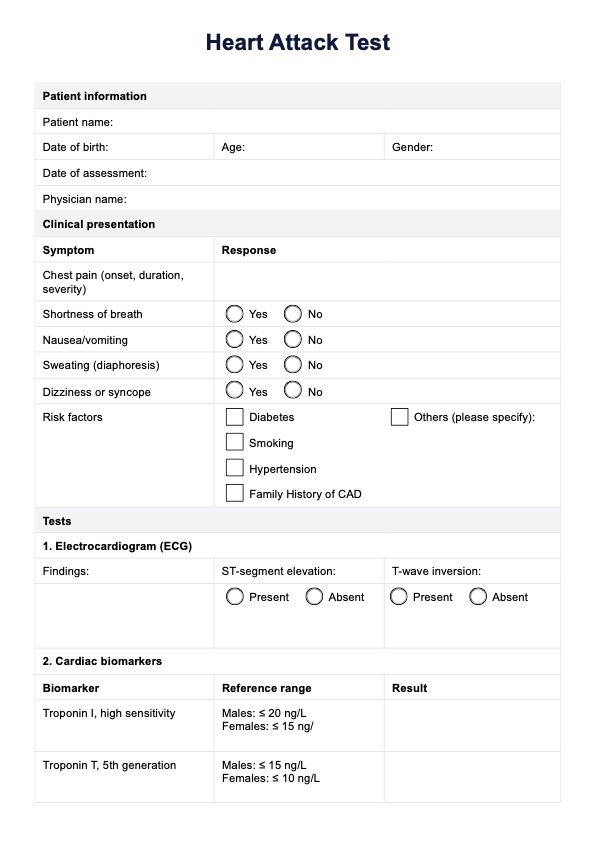The template includes the Electrocardiogram (ECG), Troponin I and T blood tests, and the echocardiogram. These three tests are essential for diagnosing a heart attack and providing critical information about heart rhythm, muscle damage, and overall heart function.

Heart Attack
Use our Heart Attack Test template to streamline diagnosis with ECG, Troponin tests, and echocardiogram. Ensure accurate heart attack detection and treatment.
Heart Attack Template
Commonly asked questions
Research has shown that Troponin I and T are more specific and sensitive markers for myocardial injury compared to CK-MB, which is now considered obsolete for diagnosing heart attacks. Troponin levels remain elevated longer after a heart attack and provide a more reliable indication of cardiac muscle damage.
No, this template is specifically designed to assess and diagnose heart attacks, particularly STEMI, NSTEMI, and unstable angina. While it provides valuable insights into myocardial infarctions, it is not intended to diagnose other cardiac conditions or symptoms like blood clots in arteries, heart failure, or arrhythmias.
EHR and practice management software
Get started for free
*No credit card required
Free
$0/usd
Unlimited clients
Telehealth
1GB of storage
Client portal text
Automated billing and online payments











